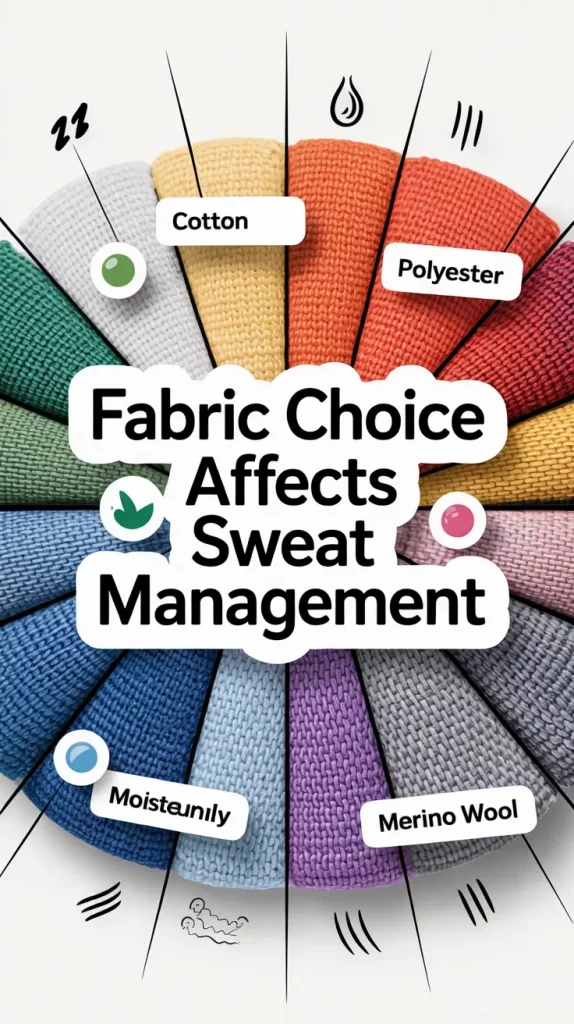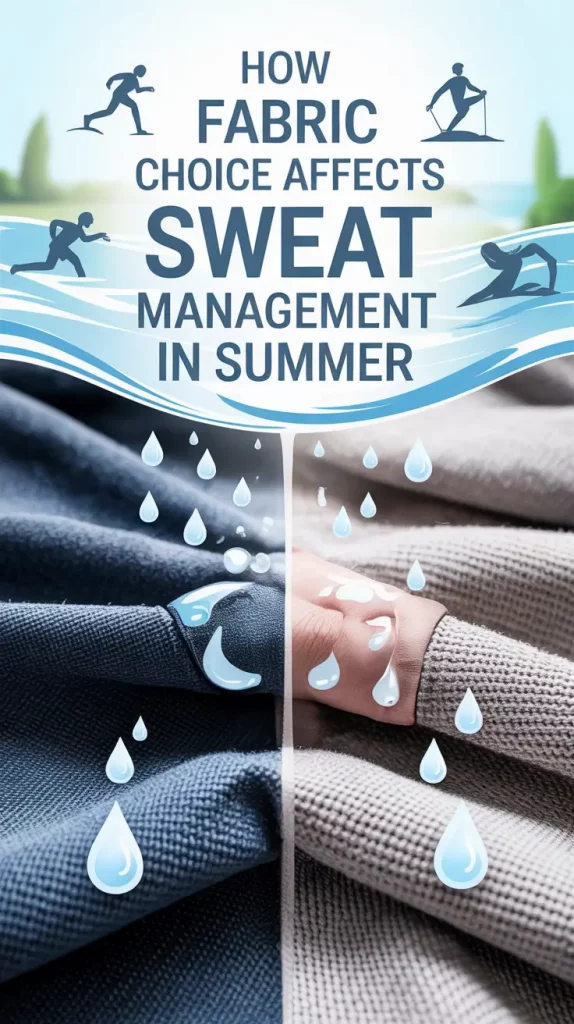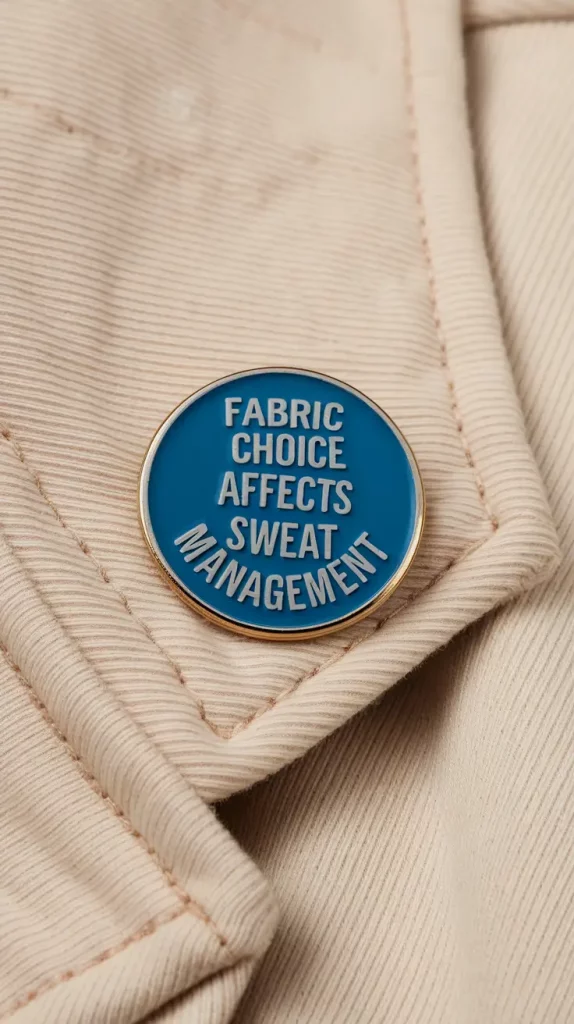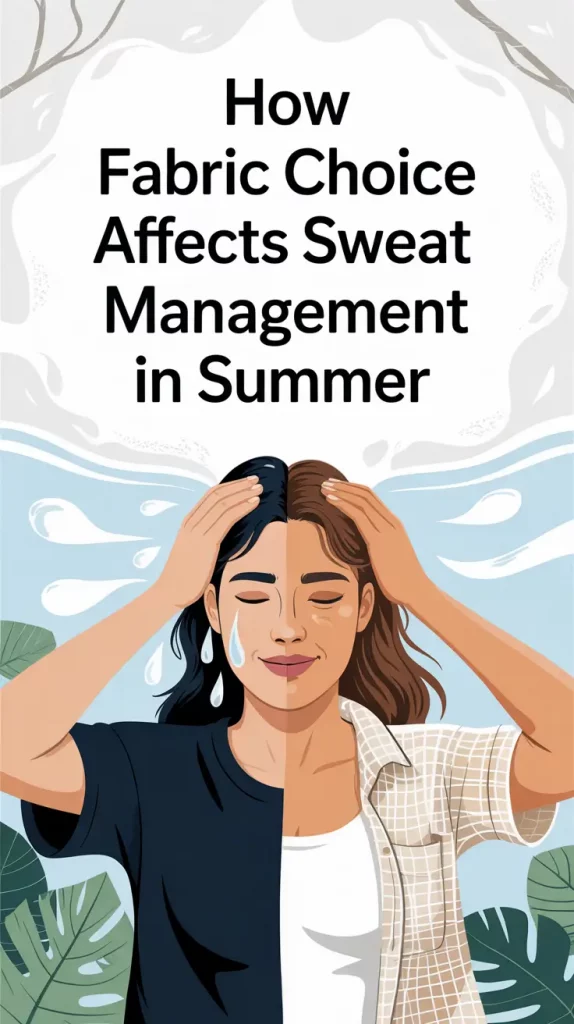How Fabric Choice Affects Sweat Management in Summer: Best Materials for 2025 Comfort
Selecting inappropriate T-shirt materials leads to heat-trapping sensations similar to being inside a sauna during a casual summer walk. The increasing temperatures throughout the U.S. now require fabric selection to serve purposes beyond style because it directly affects heat management and comfort. Understanding the relationship between human sweat and different fabrics has become critical knowledge for the year 2025.
The correct fabric selection allows your body to release heat and moisture, but using the wrong fabric will create discomfort by trapping sweat. This piece offers guidance to assist readers in selecting better materials, including cotton and linen, together with high-tech synthetic fabrics engineered for performance.
Who Should Read This?
- U.S. residents battling hot and humid summers (Florida, Texas, Georgia, etc.)
- Fitness lovers and outdoor enthusiasts
- Smart shoppers seeking breathable summer clothing
Let’s explore how your clothing choices can make or break your summer.

How the Human Body Cools Itself: The Role of Sweat
Why Do We Sweat?
Sweating is your body’s natural cooling mechanism. When your internal temperature rises, sweat glands release moisture, which evaporates and takes heat with it. Only when evaporation remains unobstructed can it be effective.
What Interferes with Evaporation?
- High humidity
- Lack of air circulation
- Non-breathable fabrics that trap moisture
Your clothes serve as an extension of your skin. If they don’t “breathe,” your sweat stays trapped, and your body keeps overheating.
Have you ever worn a polyester shirt in summer and felt drenched in 10 minutes?
Natural Fabrics: How Cotton, Linen, and Bamboo Handle Sweat
Cotton: Common but Imperfect
People choose cotton because it offers a gentle touch and is affordable. The material allows airflow through its structure, but it retains moisture slowly because it does not dry immediately. Do you find yourself feeling soaked after a long walk? Blame cotton.
Linen: The Summer King
The material of linen dominates dry summer heat environments. The loose structure of bamboo fibers allows the fabric to remain extremely ventilated while it dries more rapidly than cotton fabric. Although it is easily susceptible to wrinkles, it remains cool and offers superior performance in hot, dry areas.
Bamboo: Underrated but Powerful
The market is increasingly adopting bamboo fabric as their main selection. Bamboo fabric contains natural antimicrobial properties ; it both breathes well and absorbs perspiration naturally. Bamboo fabric provides soft comfort to the body and environmentally friendly characteristics that make it perfect for summer use as well as use by people with sensitive skin.

Quick Comparison Table
| Fabric | Breathability | Drying Speed | Feel on Skin | Odor Resistance |
|---|---|---|---|---|
| Cotton | Moderate | Slow | Soft | Low |
| Linen | High | Fast | Textured | Medium |
| Bamboo | High | Moderate | Very Soft | High |
Synthetic Fabrics and Modern Tech: Sweat Management for the Active Lifestyle
Performance Synthetics in 2025
Synthetic fabrics have progressed past their former sticky, sticky character. Scientists integrate moisture-wicking characteristics into synthetic fabrics, which include polyester as well as nylon and elastane. Nike’s (Dri-FIT) and Under Armour’s (HeatGear) activewear products have completely transformed what summer activewear can be.
You will remain dry during activity since these materials bring moisture from your skin toward their exterior surface to speed up evaporation. Workouts and extended commutes will not dampen your skin with these fabric materials.
The Pros and Cons of Synthetics
Pros:
- Lightweight and stretchy
- Quick-drying
- Often odor-resistant when treated
Cons:
- Can retain smells over time
- Not always sustainable
- Some can feel warm in direct sun
Have you tried synthetic sportswear that actually feels cooler than a cotton tee?

Blended Fabrics and Smart Materials: The Future of Summer Comfort
The Power of Fabric Blends
The best outcomes result from uniting fibers between natural and synthetic elements. Products made from cotton and polyester blend materials provide moisture-evaporation speed combined with natural airflow. Clothing labels, following a 60/40 and 70/30 split, provide the best measures for balancing fiber qualities.
Smart Fabrics to Watch in 2025
NASA initially invented the temperature-regulating material Outlast®. The list of modern materials includes phase-change components together with UV-blocking textiles. People who feel affected by heat or perform their duties outside can benefit from such materials.
Top U.S. Brands Offering Sweat-Controlling Apparel
- Uniqlo AIRism: Affordable, moisture-wicking, and soft
- Columbia Omni-Freeze: Uses cooling polymers
- REI Co-op Activewear: Sustainable blends for outdoor use
Tech Feature Table
| Brand | Technology | Price Range | Best Use |
|---|---|---|---|
| Nike Dri-FIT | Wicking polyester | $25-$60 | Running, gym |
| Uniqlo AIRism | Microfiber blend | $15-$40 | Casual, travel |
| Columbia | Omni-Freeze ZERO | $30-$80 | Hiking, outdoors |
How to Choose the Right Summer Fabric: A Buyer’s Guide
6 Questions to Ask Before Buying Summer Clothes
- What’s the fabric composition?
- Is it breathable and moisture-wicking?
- How fast does it dry?
- Does it retain odor?
- Is it comfortable against your skin?
- Can it handle repeated washes?
Best Fabrics by Use Case
- Office wear: Lightweight cotton, cotton-linen blends
- Outdoor activities: Polyester, nylon, smart tech blends
- Lounging at home: Bamboo, modal, AIRism
Cheat Sheet for Summer Clothes
| Activity | Recommended Fabric |
|---|---|
| Office | Cotton-linen blend |
| Gym | Polyester (Dri-FIT) |
| Beach | Linen, mesh, rayon |
| Travel | Bamboo, modal, microfiber |
| Gardening | Nylon with UV block |
What’s your go-to fabric when the thermometer hits 95°F?
FAQ: Summer Sweat and Fabric Choices
Q: Are natural fabrics always better during the summer?
A: Not necessarily. While they breathe well, they can absorb and retain moisture. Performance synthetics dry faster and may offer more comfort for activewear.
Q: What fabric should I avoid during hot months?
A: 100% polyester without moisture-wicking treatment, acrylics, and denim-these trap heat and sweat.
Q: Do color and fabric weight matter?
A: Absolutely. Lighter colors reflect heat, and thinner fabrics allow better airflow.
Q: Is “moisture-wicking” a real thing or just marketing?
A: It’s real. Fabrics with wicking technology move moisture away from the skin, keeping you dry.
Key Takeaways: Stay Cool and Dry This Summer
- Your fabric choice directly affects how you manage sweat and stay cool.
- Natural fibers like linen and bamboo work wonderfully for everyday use.
- High-tech synthetics excel in active and humid environments.
- Blended fabrics often offer the benefits of both worlds.
- Always check labels and shop based on activity and environment.
So, which fabric helps you feel fresh in the summer heat? Share your tips or favorite brands in the comments!

